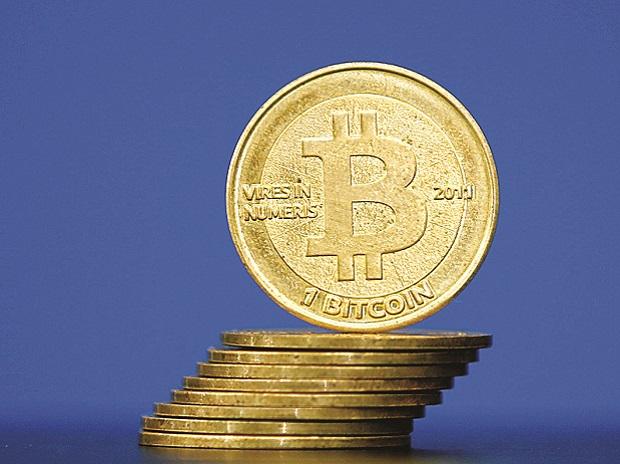Cryptocurrencies as an asset class gained through the pandemic. The two most popular cryptos (by trading volume, and also market-cap) are Bitcoin and Ethereum. Since January, Bitcoin has risen about 141 per cent, while Ethereum is up over 250 per cent. Both are at three-year highs.
Cryptos are speculative stores of value. Coins are unique codes, not fiat currency backed by central banks. A coin can be broken up into fractions, each fraction defined by its unique code. Every crypto transaction is verified by a peer-process of blockchain matching, to see if a given coin is valid, if it is contained in a given wallet (the wallet-owner may be anonymous), and a given coin is not used in two transactions at the same time.
If a password is hacked, there is no redress. So trading cryptos carries high “digital” risk. Bitcoin also has a bad reputation of being the currency of choice for cybercriminals. One advantage for everyone: if you memorise the codes, with no electronic or physical record, and still trade crypto.
Cryptos are not used very often in ordinary transactions. They are however, very useful for cross-border transactions. They allow convenient currency exchange, bypassing controls and minimising transaction cost. Buying Bitcoin in rupees and selling it in US dollar is an efficient way to exchange rupees for dollars, compared to a standard INR –USD exchange, with bank commissions.
Some nations, including big economies like Japan and Korea, allow cryptos to be used in corporate transactions. Some ban them. In many nations, cryptos are a legal grey area, or they are treated like curios and art objects. Like art, crypto may have little intrinsic value but it can be very highly priced depending on demand.
The RBI imposed a ban on cryptocurrency, which was lifted by a Supreme Court decree in March 2020. Indians can trade cryptos on several exchanges, in rupees. It is perfectly possible that cryptocurrency trading will be banned again, perhaps through legislative action. That’s a risk you must be prepared for, if you do trade cryptos.
Regulatory and digital risks apart, prices are very volatile. Daily price ranges for cryptos are higher than for equity, derivatives and forex. This is because there are no fundamental factors affecting price. So, prices are moved purely by demand and supply and those variables are driven purely by news-related sentiment.
Since 2015, Bitcoin has a daily high-low range of over 5 per cent (as a percentage of average daily price). There’s also friction in crypto trading. Arbitrage across exchanges is common due to the significant difference in prices. Trade confirmations are slow. Blockchain verification takes time, especially on high-volume days.
Given all the risks, why trade cryptos? The potential returns are high. Cryptos have been big gainers in times of trouble. In that sense, cryptos are like gold; havens during uncertainty.
Indeed, the Bitcoin concept was sparked by the 2008 subprime crisis and it saw steep rallies in the global financial crisis of 2011-12. It gains, whenever there’s geopolitical tension, or financial turmoil. Crypto trading volumes out of India jumped during demonetisation, for example.
Will global uncertainty continue in 2021?
Yes. There’s good news about vaccines. But it will take a very long time before 7 billion are immunised. The global economy is a mess. Geopolitics is also a mess. Think of Brexit, rocky power transition in the USA, continuing civil war in Syria, Ukraine vs Russia, Poland and Hungary Vs the EU, India-China, etc.
It will take at least two years, or longer before the global economy is in reasonable shape. Cryptos should continue to be net gainers, though there will surely be huge intermediate corrections. If you’re comfortable buying art as an investment, cryptos may give more returns, for a similar quantum of risk.
 Dear Reader,
Dear Reader,
Business Standard has always strived hard to provide up-to-date information and commentary on developments that are of interest to you and have wider political and economic implications for the country and the world. Your encouragement and constant feedback on how to improve our offering have only made our resolve and commitment to these ideals stronger. Even during these difficult times arising out of Covid-19, we continue to remain committed to keeping you informed and updated with credible news, authoritative views and incisive commentary on topical issues of relevance.
We, however, have a request.
As we battle the economic impact of the pandemic, we need your support even more, so that we can continue to offer you more quality content. Our subscription model has seen an encouraging response from many of you, who have subscribed to our online content. More subscription to our online content can only help us achieve the goals of offering you even better and more relevant content. We believe in free, fair and credible journalism. Your support through more subscriptions can help us practise the journalism to which we are committed.
Support quality journalism and subscribe to Business Standard.
Digital Editor

RECOMMENDED FOR YOU